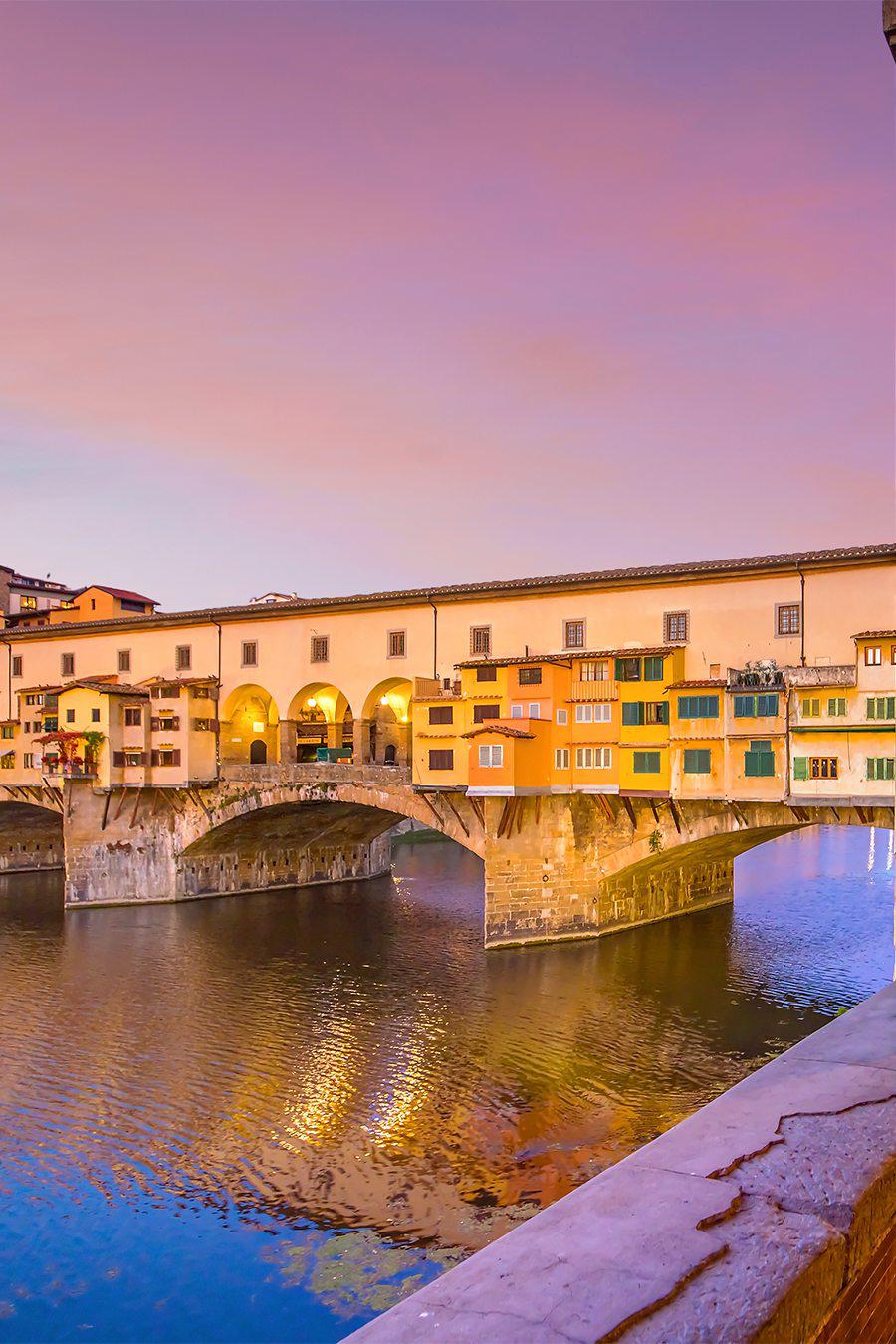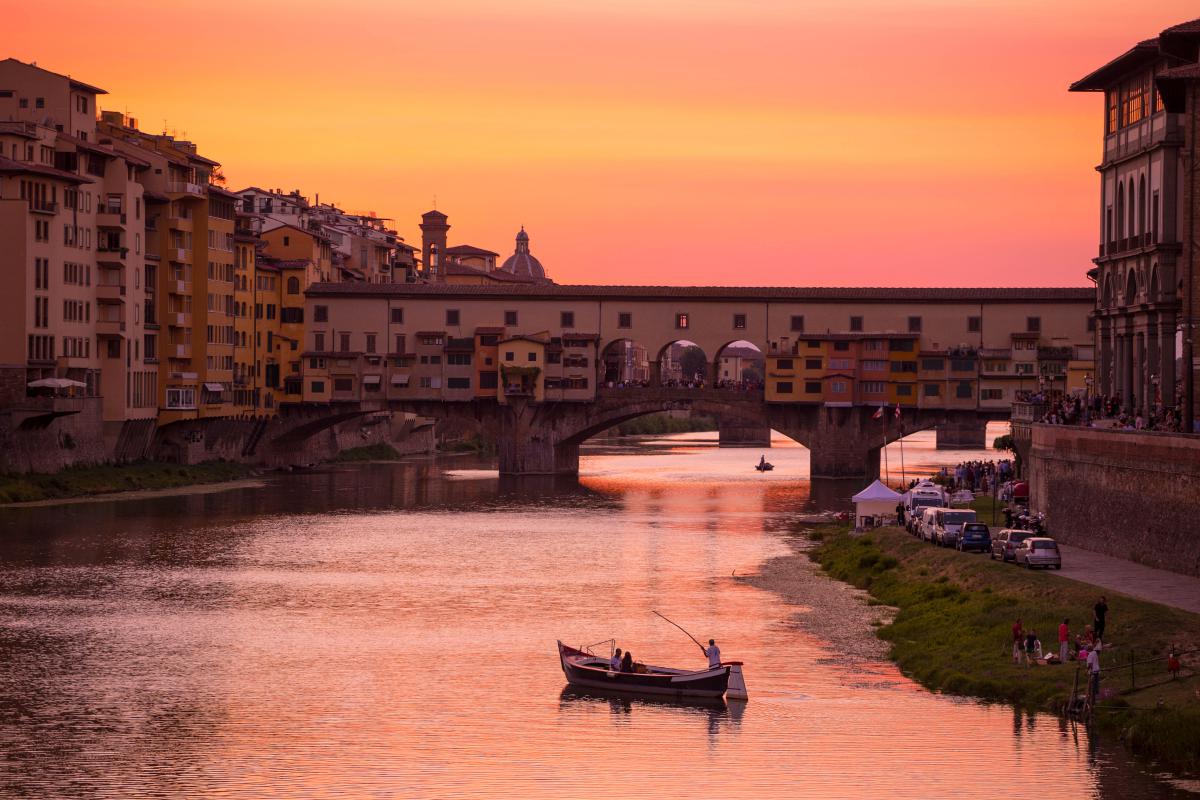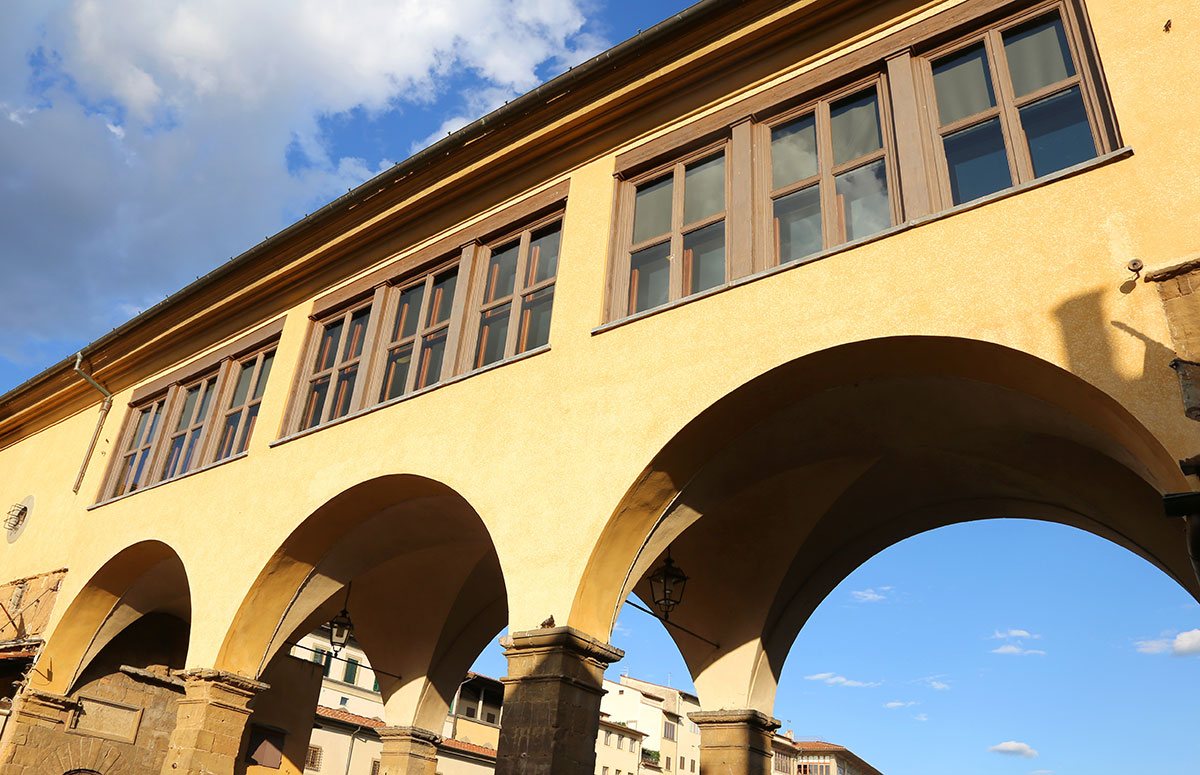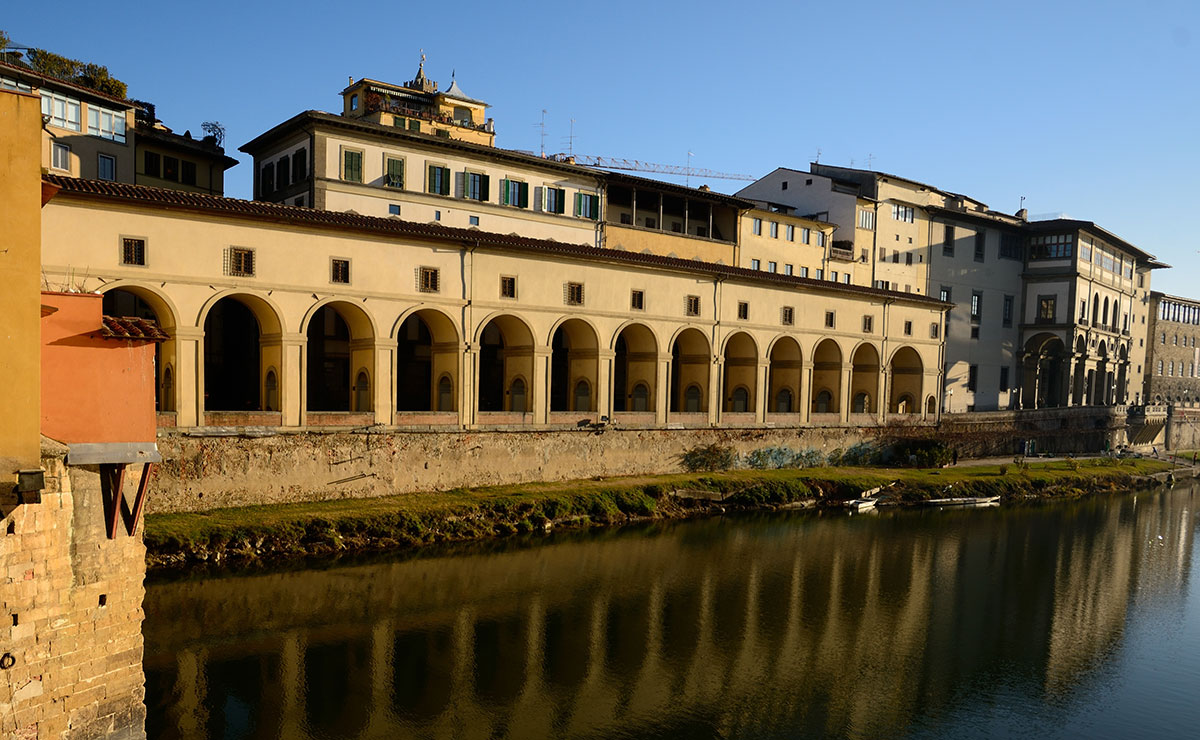Walking along Ponte Vecchio and the Vasari Corridor
The Villa dei Bosconi Itineraries
From being a food market dedicated to meat, the streets and stores of the Ponte Vecchio were slowly transformed into a crossroads of beauty, with the best European goldsmiths competing to be present. And all this thanks to the Corridoio Vasariano…
Recommended itinerary
- Ponte Vecchio
- Corridoio Vasariano
The Ponte Vecchio: pride of Florence
Definitely one of the most famous bridges in the world, the Ponte Vecchio is one of the monuments that we immediately associate with Florence. A fine example of man’s struggle against natural events and the genius that allows him to overcome difficulties, even managing to take advantage of them.
The Ponte Vecchio crosses the river Arno about 150 meters downstream, in one of the areas of natural origin where it is narrowest, through the historic center of Florence.
It was under Charlemagne that the crossing was located in its present position and there it was rebuilt several times, because of the destructive floods of the river. Only after the construction of the “lungarni” the actual bridge was definitely built.
The work, according to Vasari, was entrusted to Taddeo Gaddi and according to other historians instead to Neri di Fioravante, and it was inaugurated in 1345.
It immediately presented the three arches that still distinguish it, wide and with a lowered arch, and that constituted a great novelty in the western world: for the first time the typical model of the Roman era, which provided for the use of round arches (the typical semicircular arches), was overcome.
In order to safeguard the cleanliness of the city center, the butchers of the time were forced to transfer their stores to the sides of the bridge walkway. This was to ensure that they were isolated, for hygienic reasons, from the palaces of the center, where the city’s aristocracy lived.
The traces left by the “barrocini” and by the carts of the “beccai” were also limited to this area. Traces consisting of minute scraps of meat processing, which brought bad odors and therefore unsanitary. And which could now be easily disposed of in the Arno.
It was therefore in this period that the bridge was requalified as a city meat market and the butchers, having obtained ownership of the stores and land on the bridge, began to build rooms. These were jutting out over the Arno and were propped up with wooden poles. But the evolution of the beautiful Florentine bridge did not stop here.
The Vasari Corridor, evidence of aristocracy
The ‘Corridoio Vasariano’ (Vasari Corridor), built by Vasari on commission by Cosimo I, dates from 1565. It was intended to link the Palazzo Vecchio, then as now the political and administrative centre of Florence, with the Medici’s private residence, the Pitti Palace.
This elevated corridor, one kilometre long, would therefore have started from Palazzo Vecchio and, once it had passed through the Uffizi, it would have followed the Lungarno and then joined the Ponte Vecchio. Here the Corridor would have passed over the shops on the left side of the Bridge, and then come out near the Mannelli Tower – which marked the culminating point of the Ponte Vecchio joining the left bank of the Arno. Finally, the corridor would continue along the Oltrarno until it reached the Pitti Palace.
Even if this is the official motivation, or rather the one that has come down to us today, it is very likely that another reason was behind the construction of this architecture: the Vasari Corridor was not intended to be accessible to everyone, but only to a select few. This is because the Medici, in a turbulent period of their history, wanted to protect themselves from attacks and protests by the people and to be able to move freely around Florence, so that they could fulfil their administrative duties.
A marriage saved in Medicean Florence
The population, in fact, did not look positively on the reforms that Cosimo I introduced, revolutionising the system of government and effectively abolishing the old Florentine Republic.
The union between the Grand Duke’s son, Francesco, and Joan of Austria was also disliked.
This event provided, on top of everything else, the excuse to commission the corridor. A few years after the Corridor was inaugurated, the new Lord Ferdinand I, in 1593, decided to have the city’s goldsmiths and jewellers occupy the undertakers’ shops. This was because he did not like the fact that there was such an unhealthy trade just below the Vasari Corridor.
It should be noted that the Vasarian Corridor, in the convulsive days of the liberation in 1945, remained the only way to travel between the north and south of the city, as evidenced also in the episode dedicated to Florence in the film “Paisà” by Roberto Rossellini, where the protagonist passes incognito through a bare Uffizi Gallery full of ancient statues packed.





